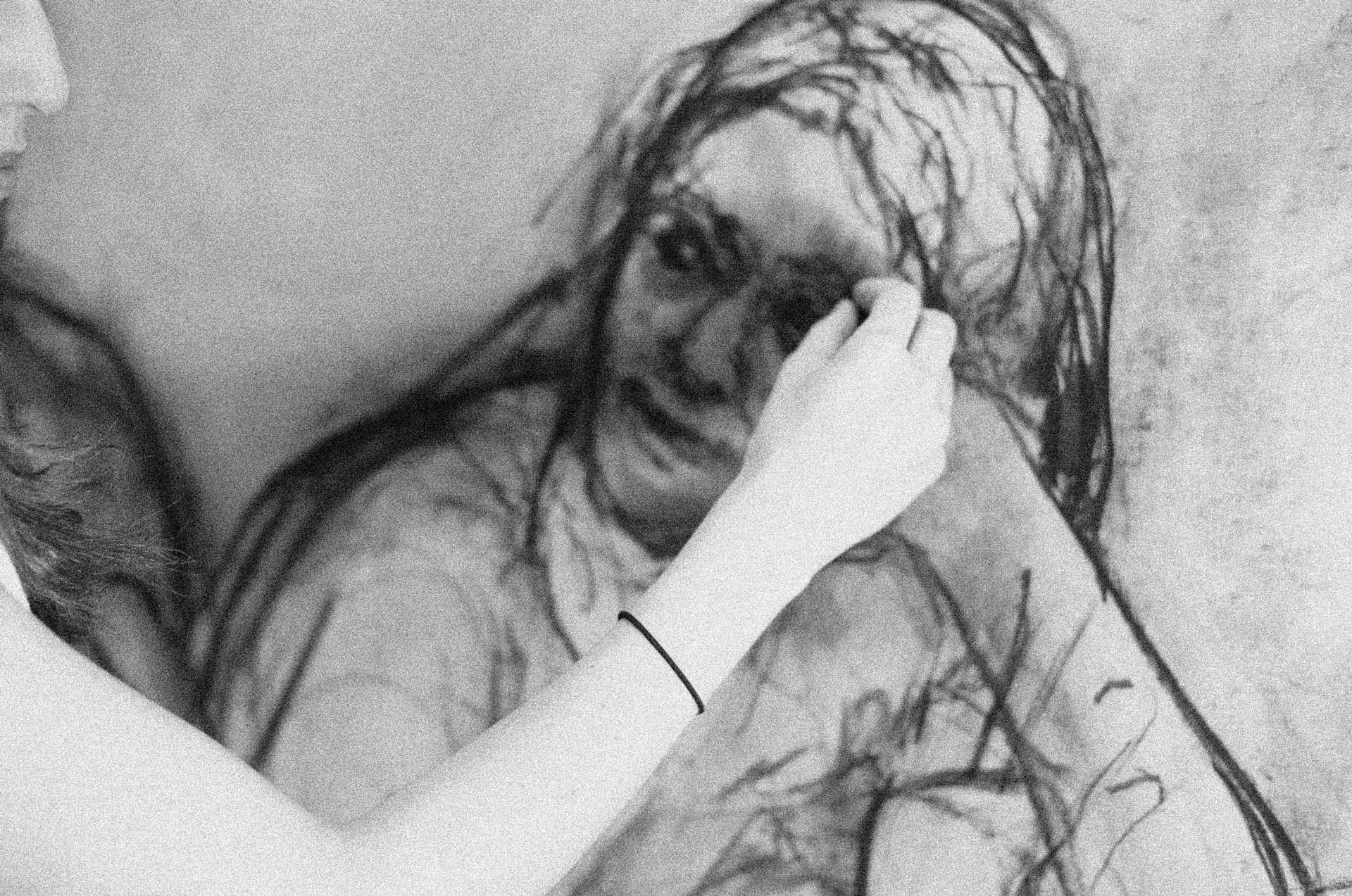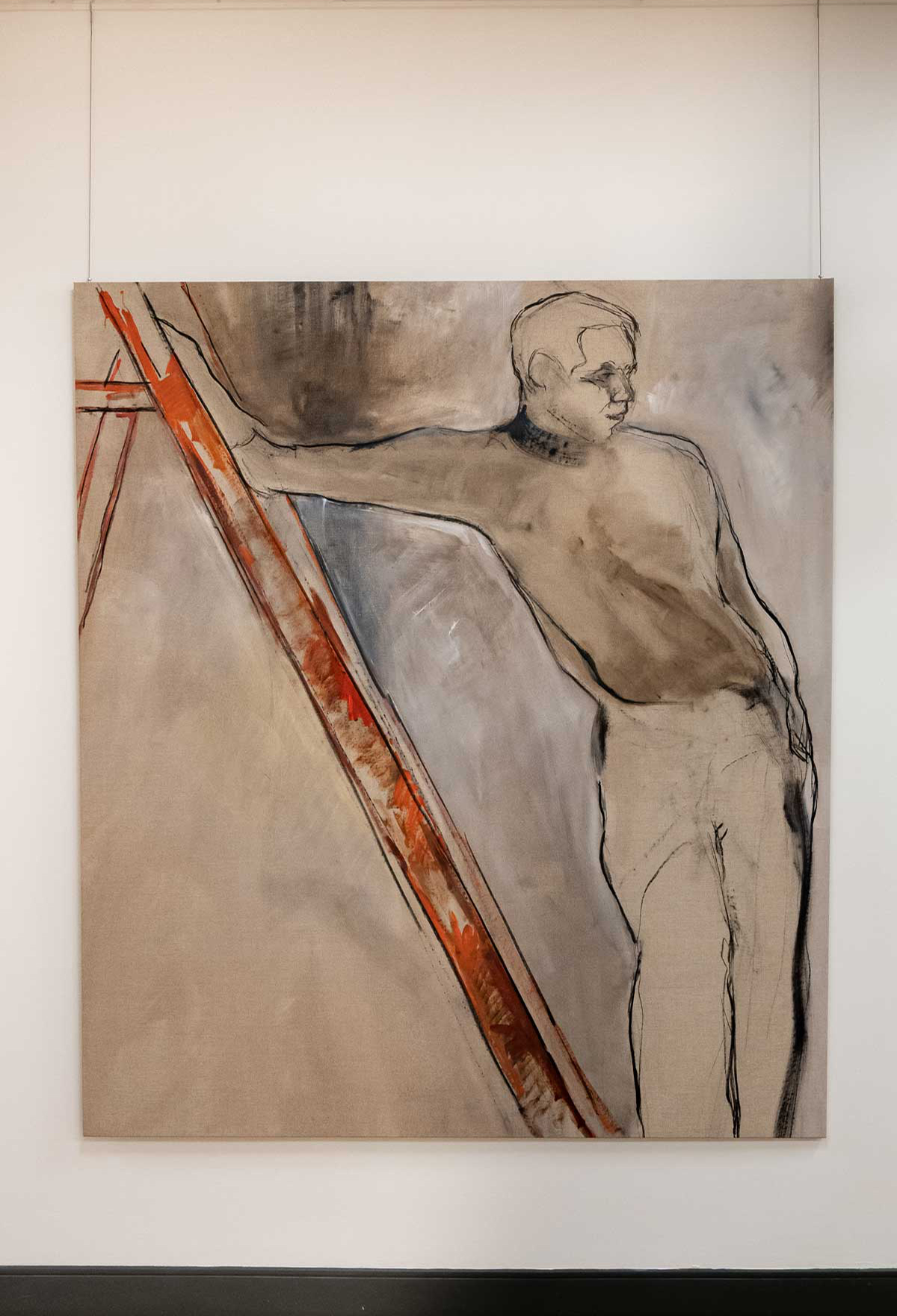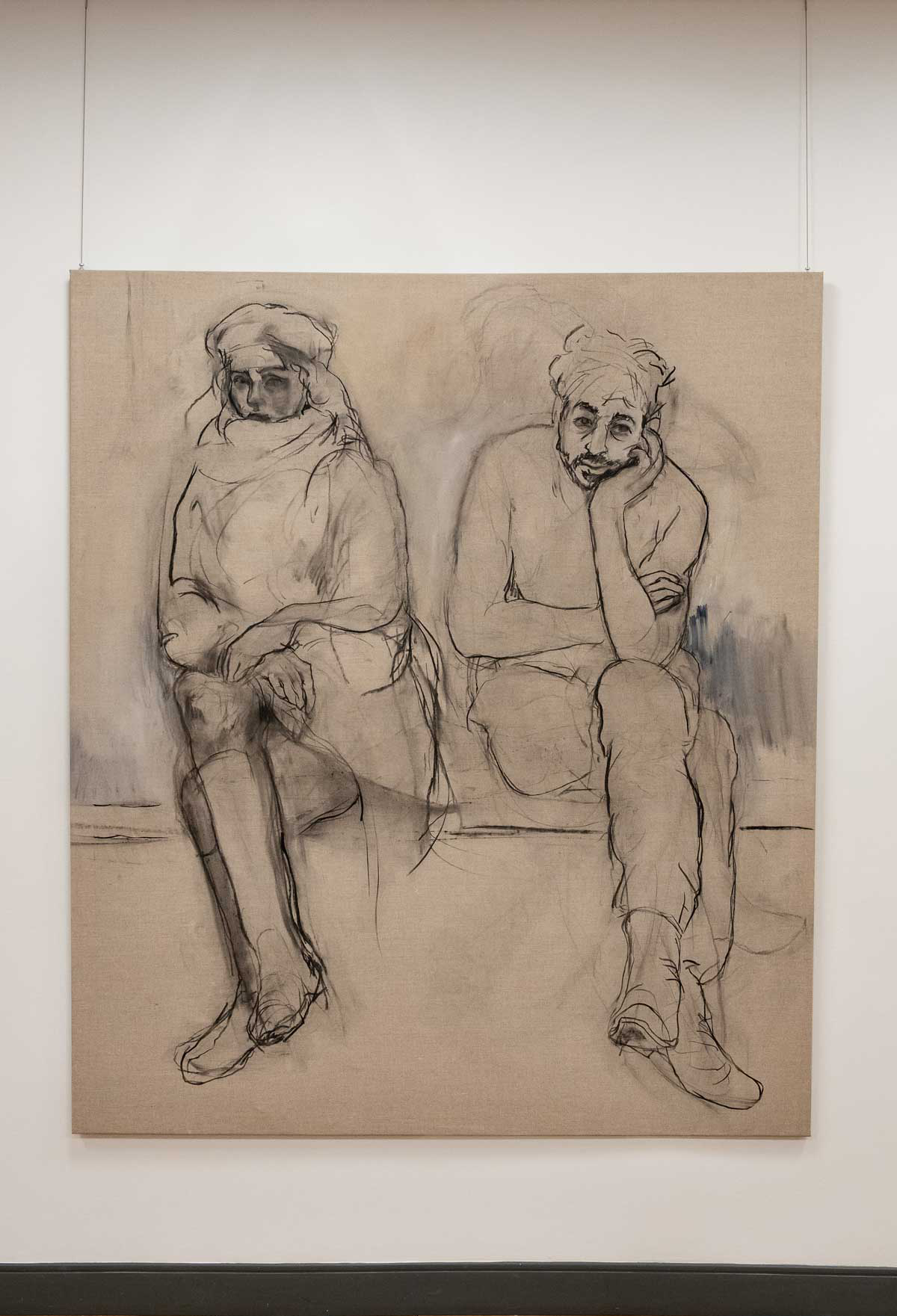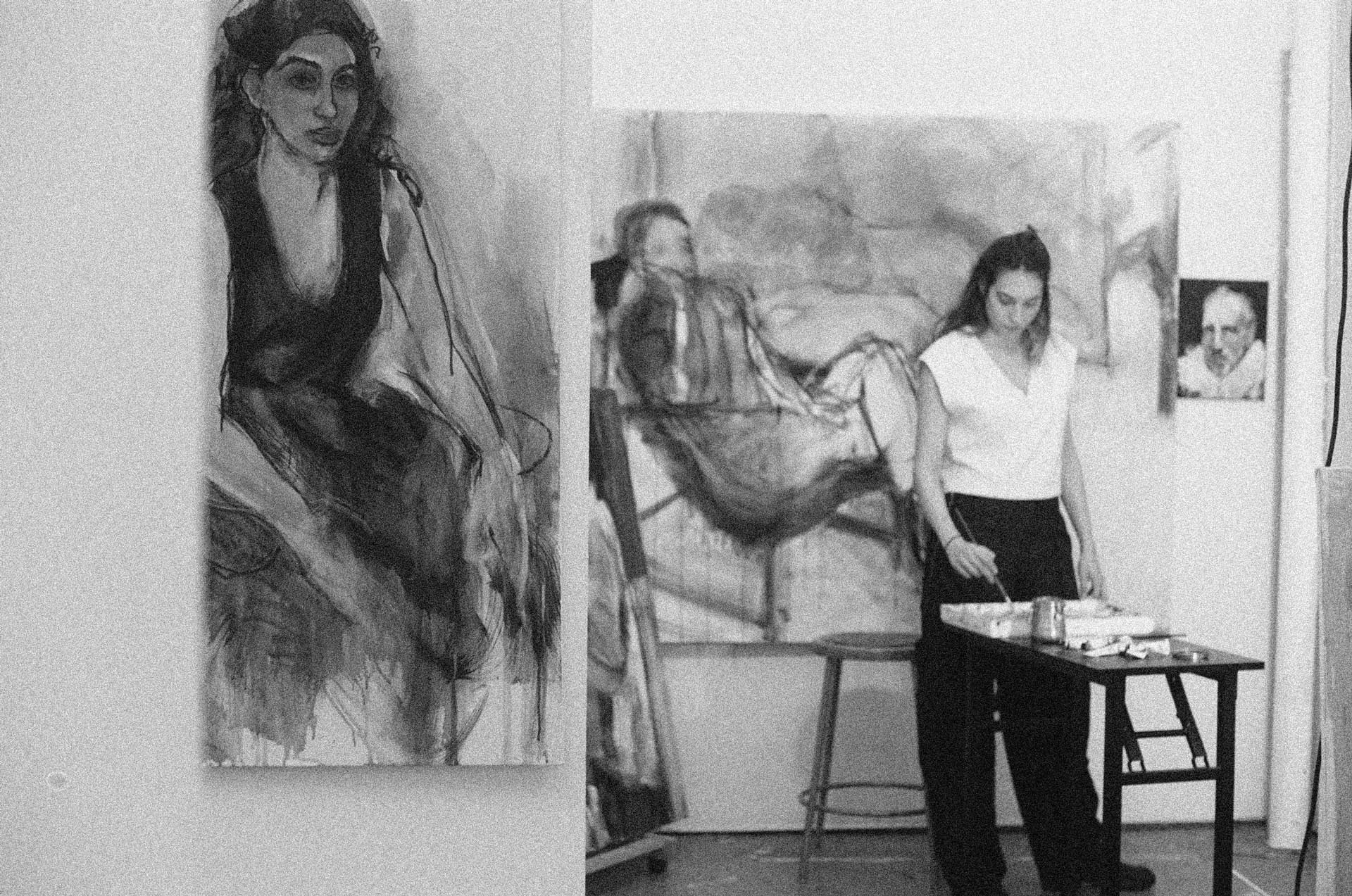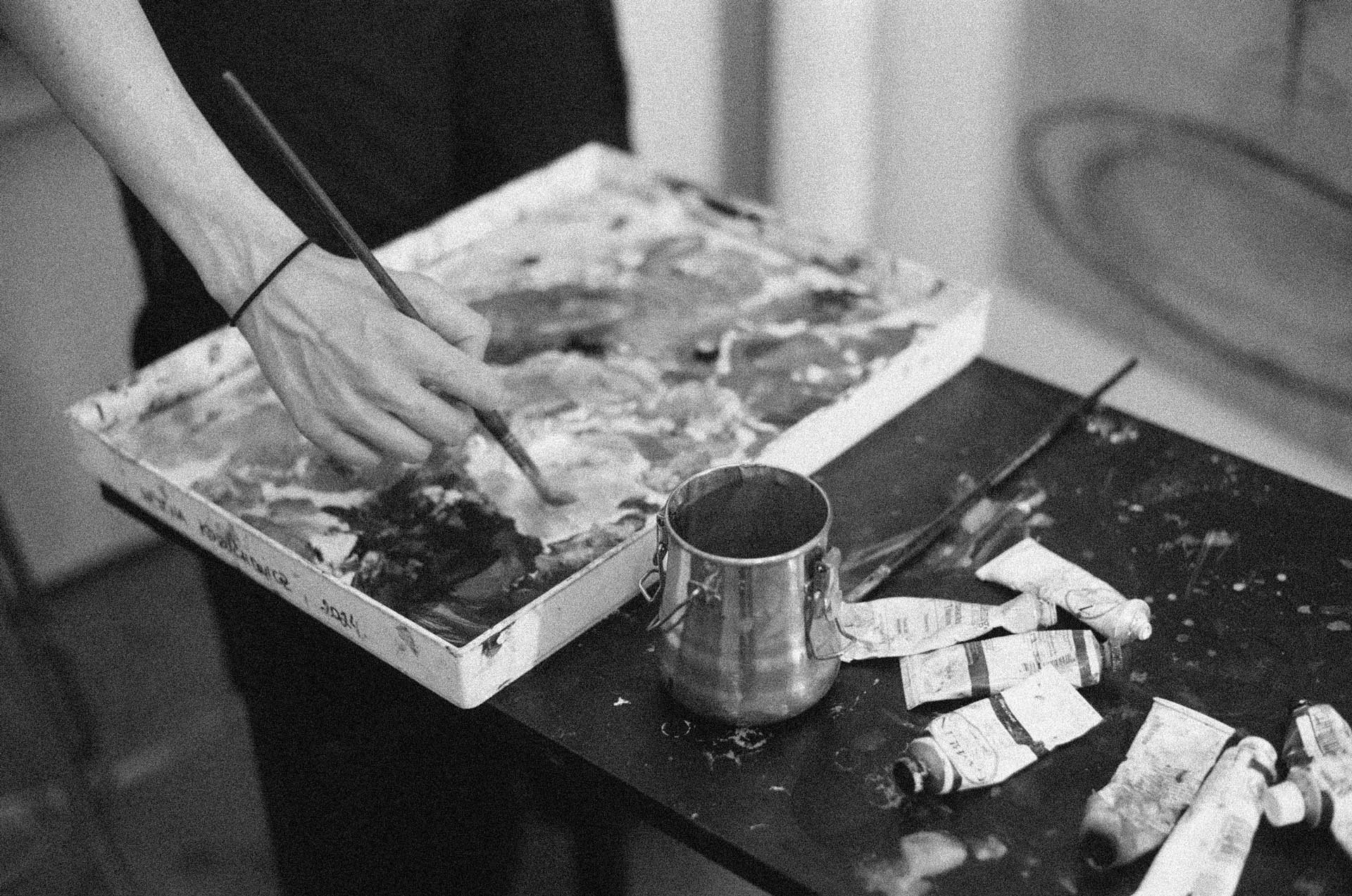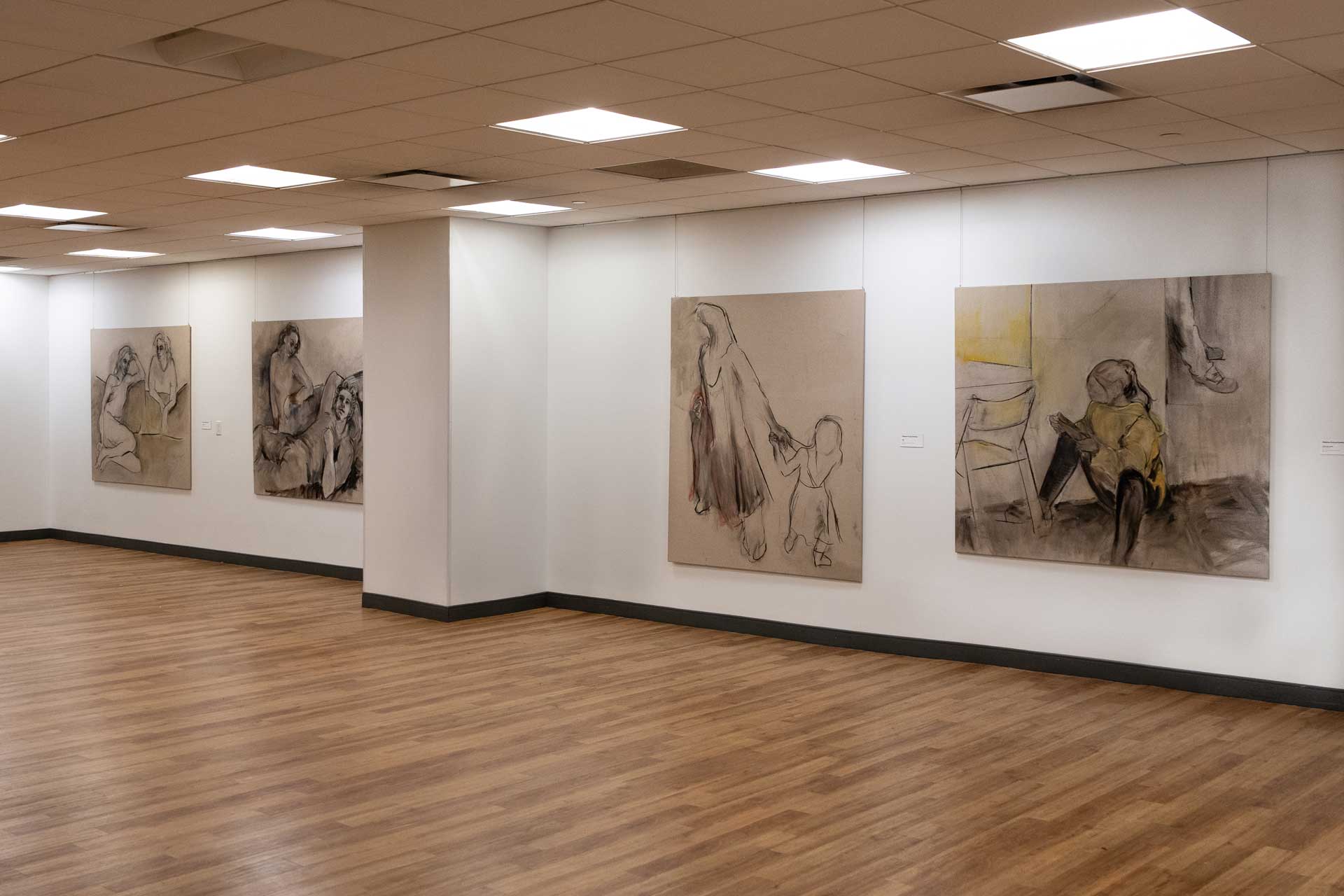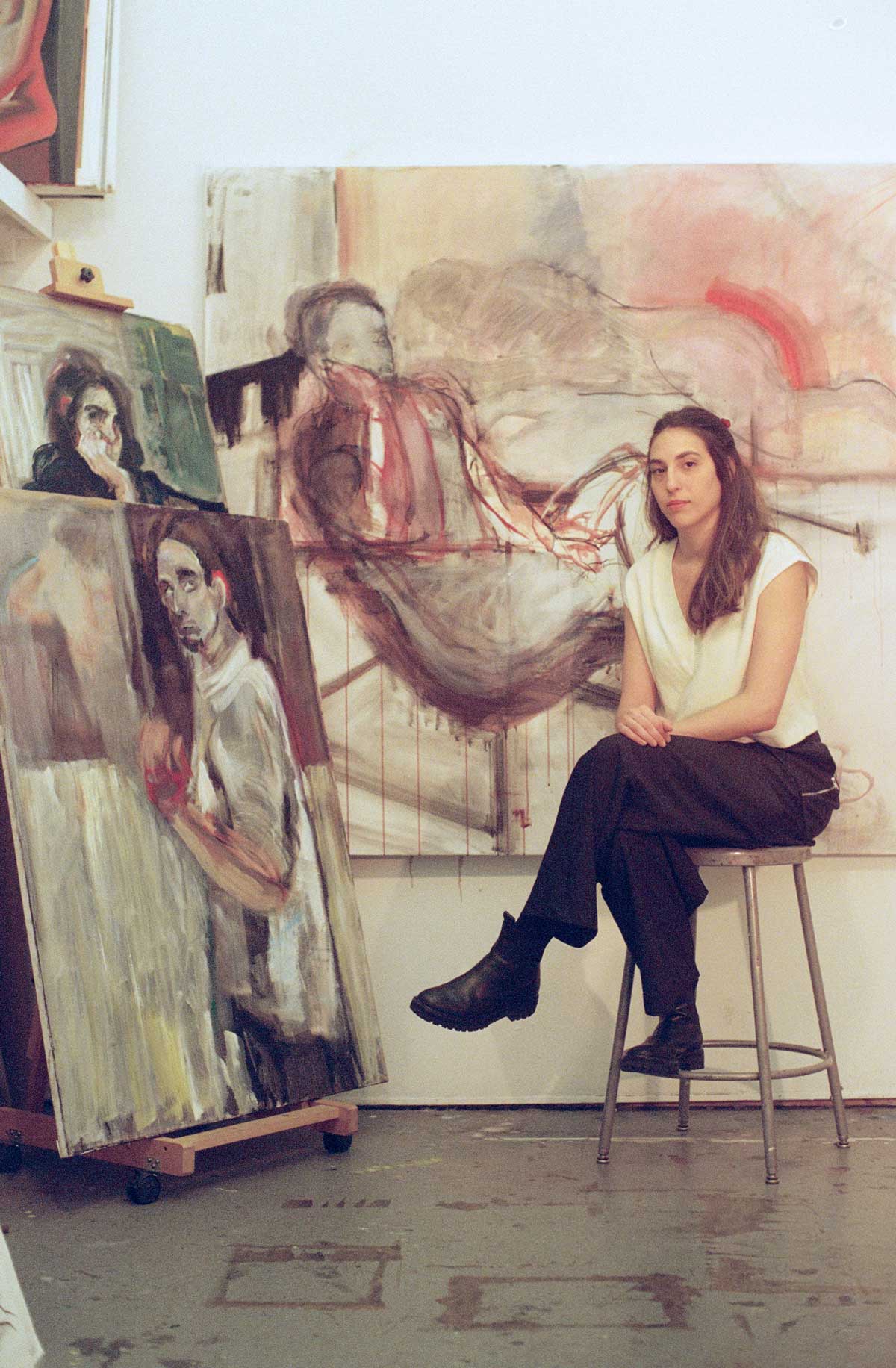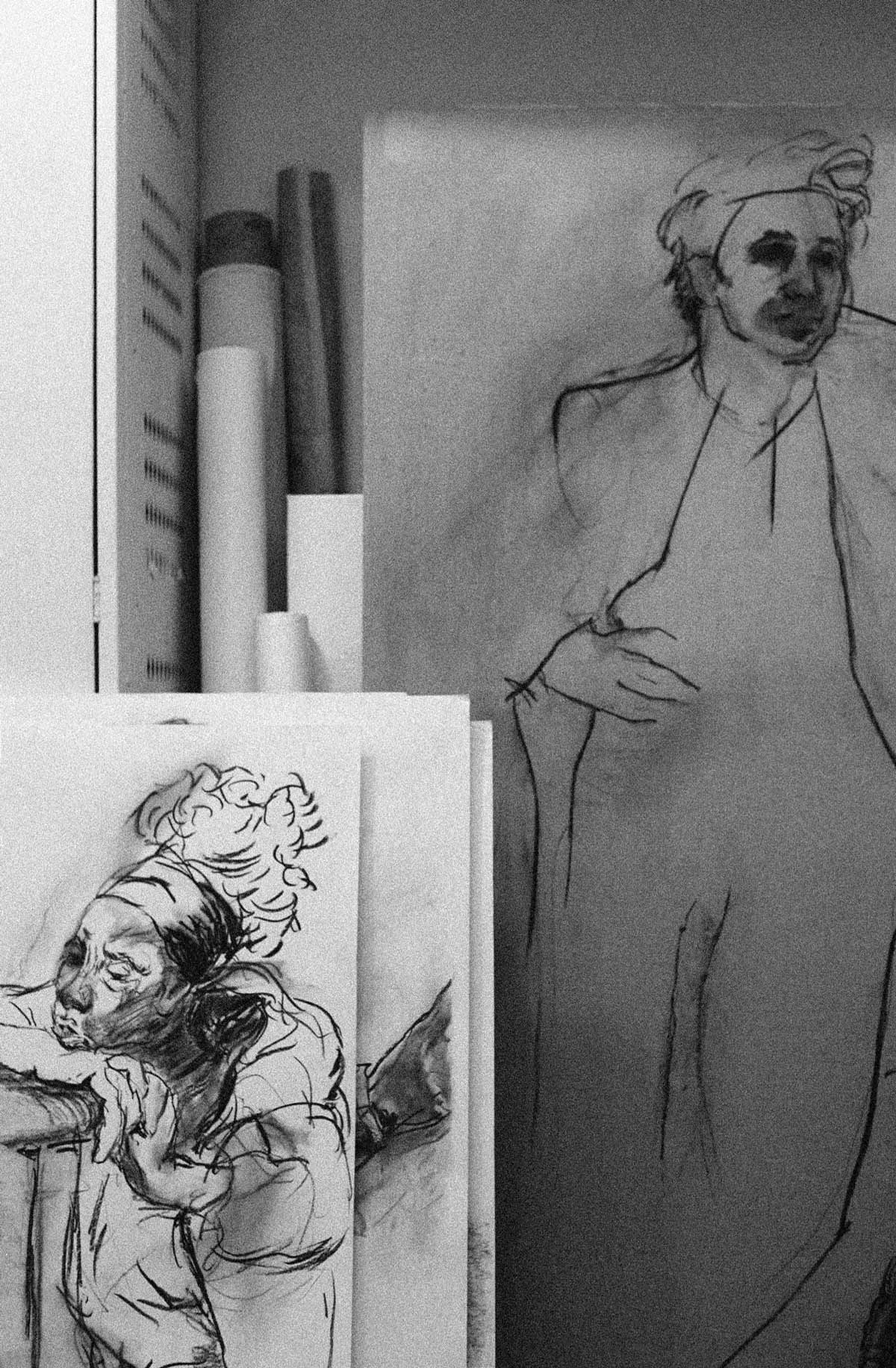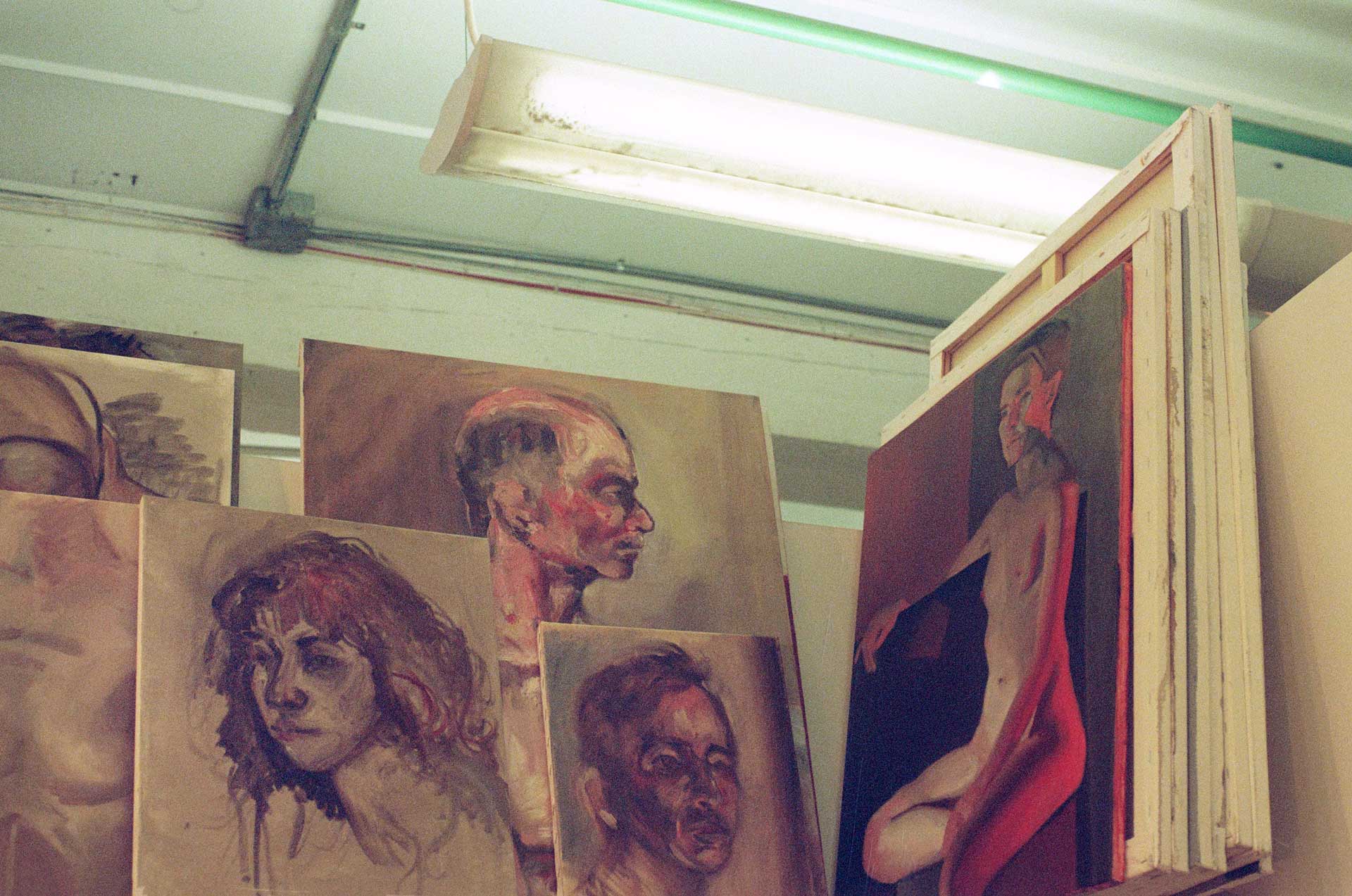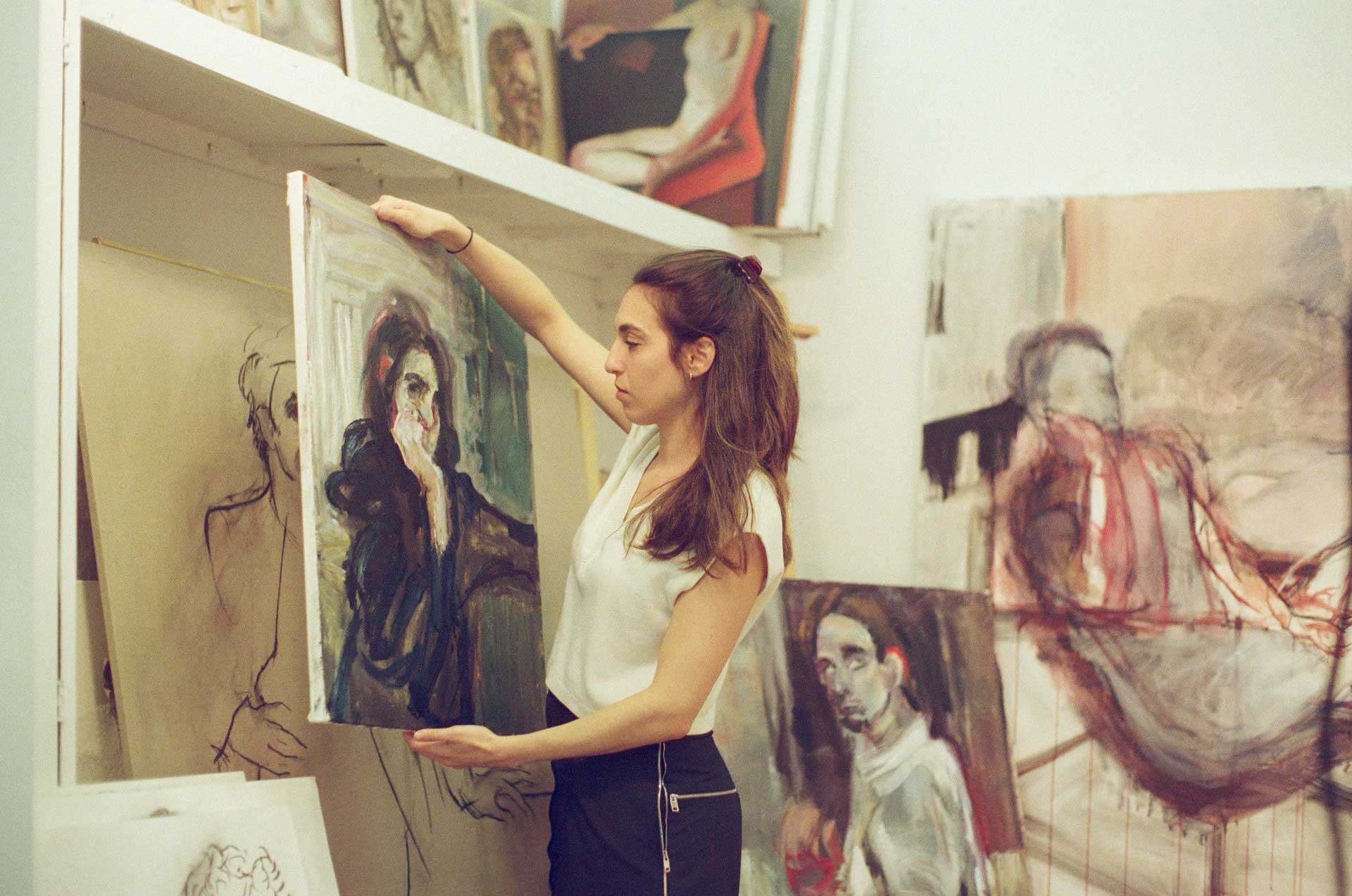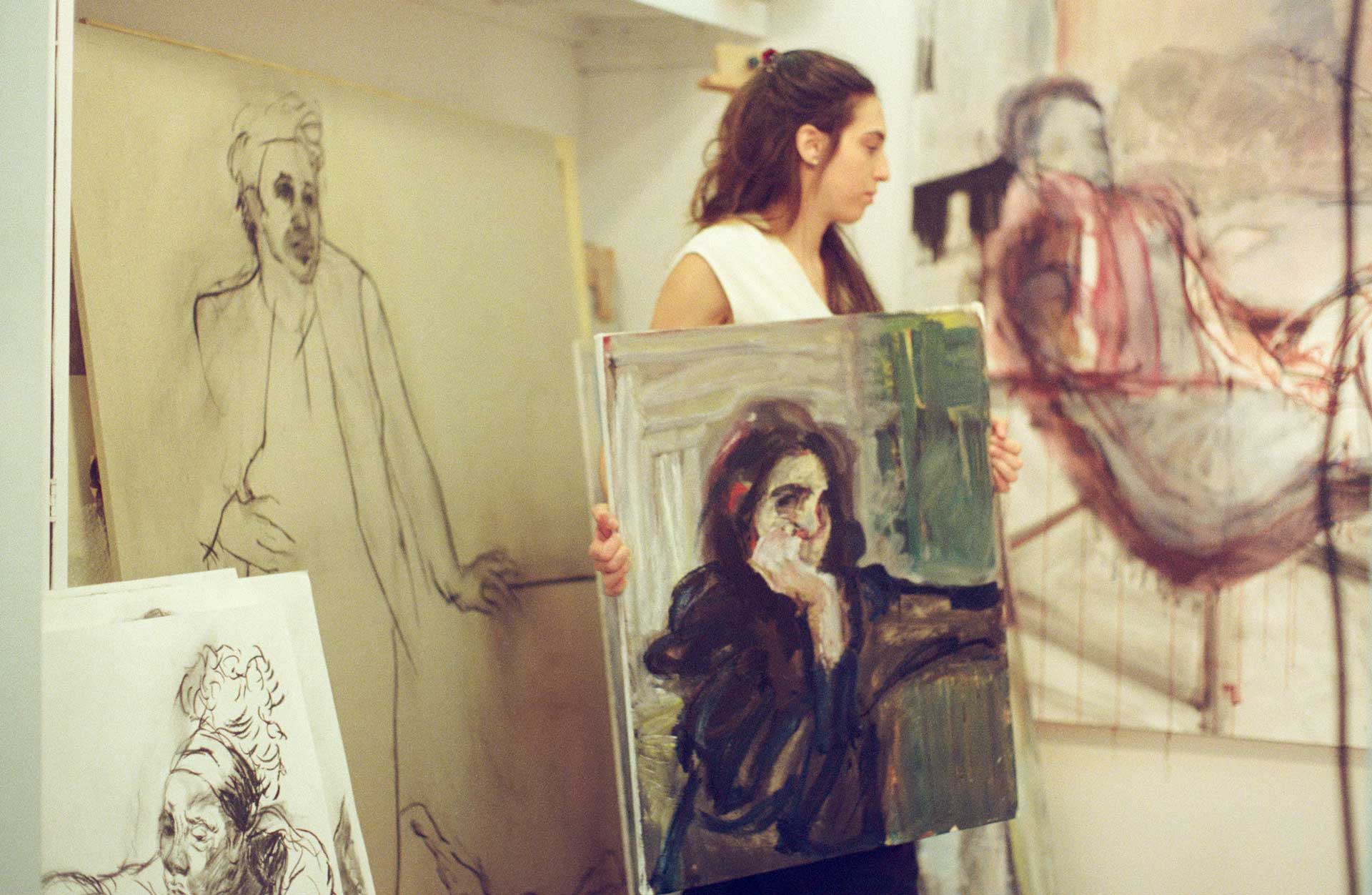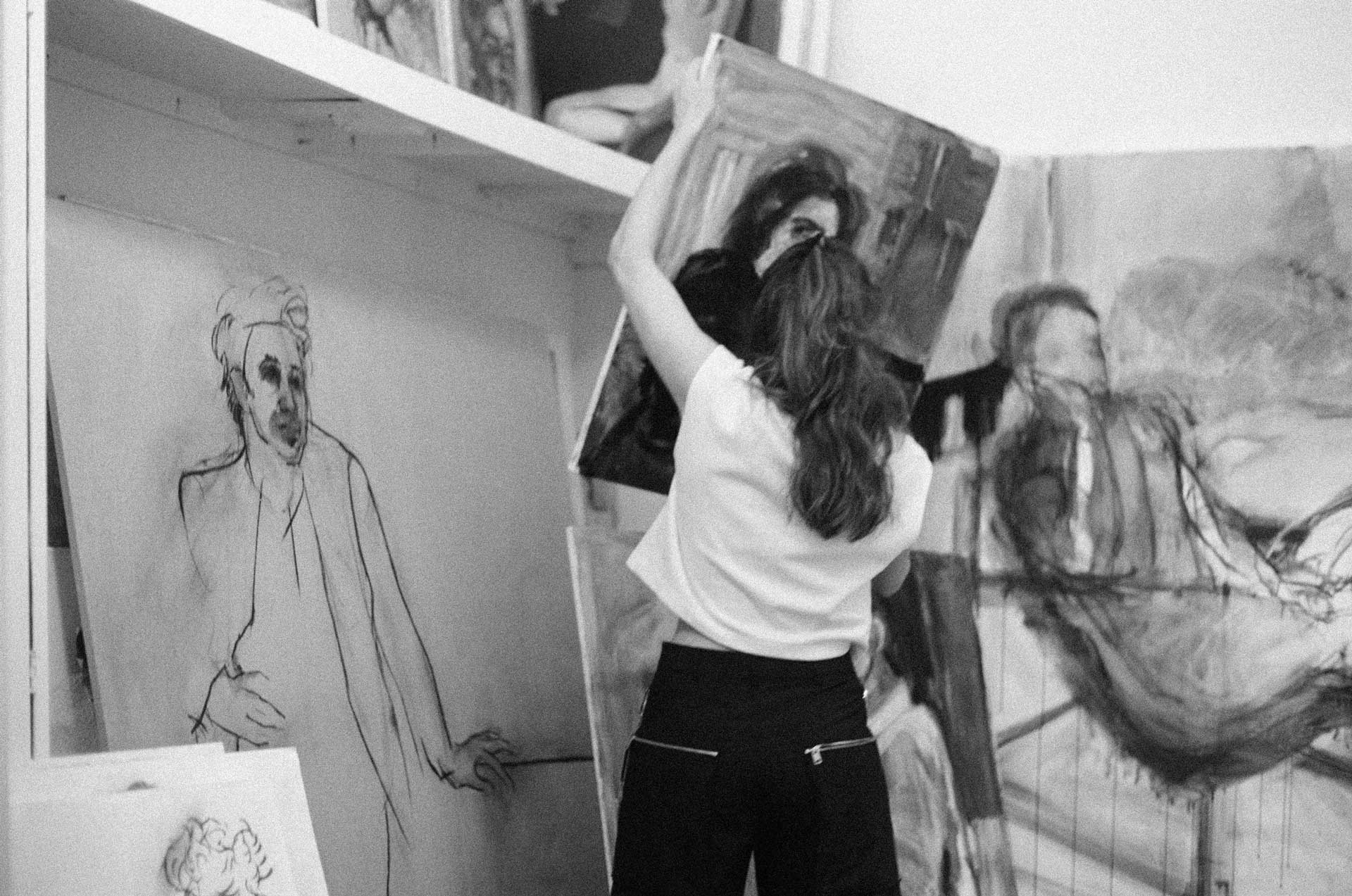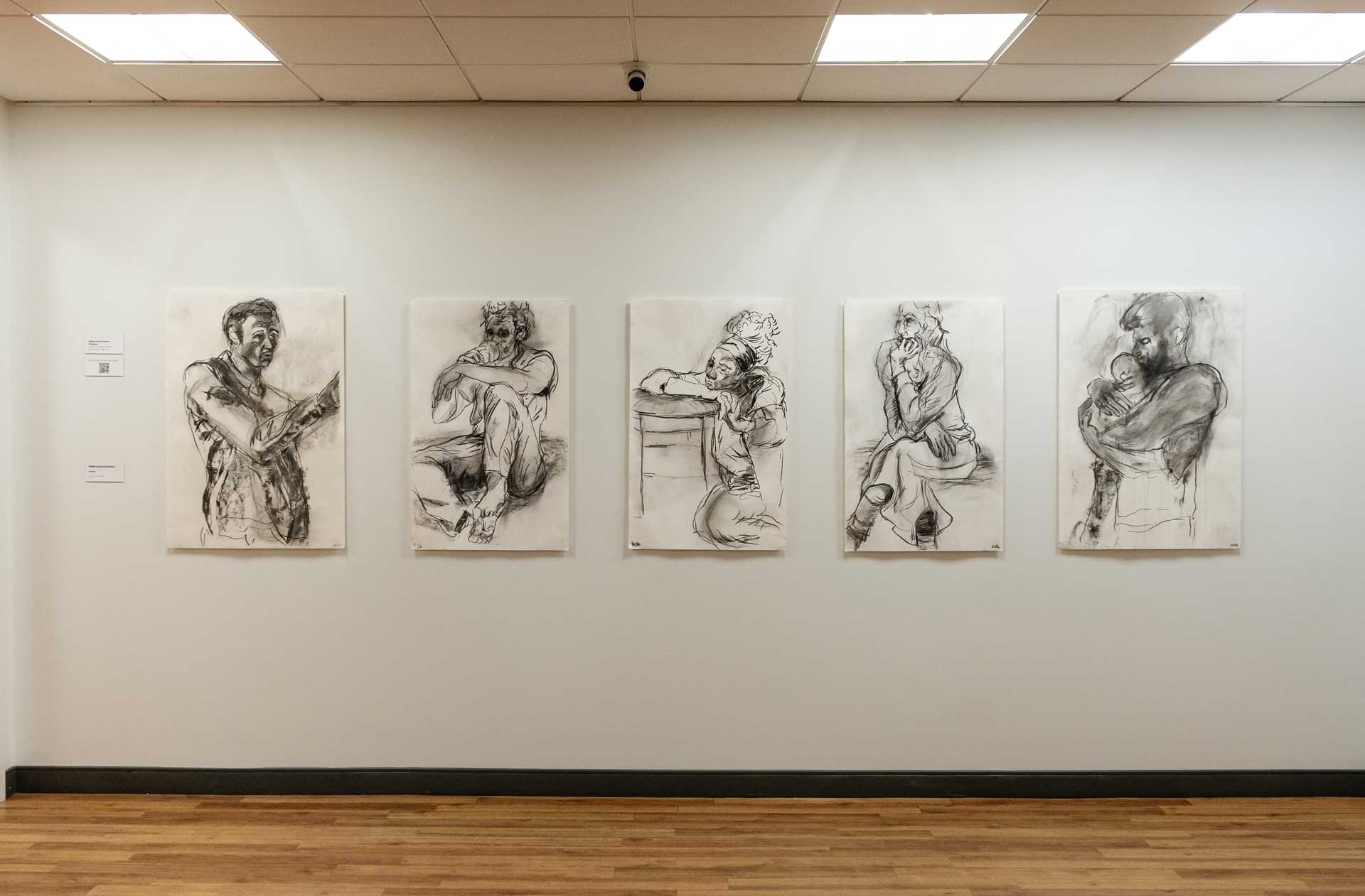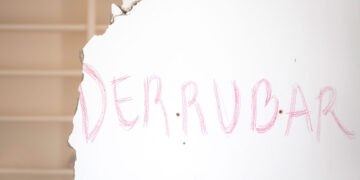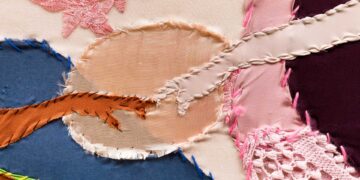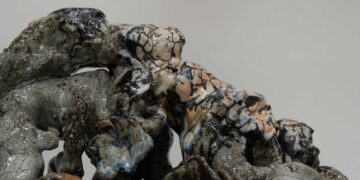I believe that the essence of life lies in the brief moments that precede or follow some scheduled situation, in the in-between spaces of events. In the rehearsal and not in the play. The waiting for someone in a restaurant, the anxiety before going on stage, a simple exchange of glances. Drawing has always been a way to preserve what I hold most precious: my vitality. I am nourished by movement, by surprise, by imprecision. From this, the line is born, transforming into drawing and rhythm.
The drawings emerge from moments of quick action, from what was seen and would generally be forgotten. It is born from my restlessness. Eric Fischl once said, “What I’m after is the effect of the moment itself: the people, the emotional content. I’m trying to stop the moment where it is open enough to let you in.” These words resonate with me and directly apply to my practice.
The human-scale or larger works are important to my process. They flow along the charcoal line, as if my gesture is reflected on the canvas. I draw, erase, and draw again. It is an act of hunting, seeking to capture and preserve. The work serves as a record of this search, an action similar to footprints left in the snow.
The results surprise me and motivate me to keep going. Then, I stop, observe, focusing on gesture and expression. I analyze carefully, knowing that with this work I highlight moments often ignored by most people.
I would say my painting begins the moment I leave my apartment. Taking the subway, crossing the streets, until finally entering my studio, when the real magic happens. Meeting people, contemplating the streets, visiting colleagues in their studios, and observing their gestures; all these moments become inspiring scenes for me. The setting of New York becomes my spectacle, where the first strokes of the paintings are born.
My strength lies in working with line, and although I mostly work with charcoal, many works call for color. I say that the work calls for it, as it is not a rational decision in fact. Without following a very precise rule, I often start the painting with heavily diluted oil to imprint the main form, and from that moment on, the canvas transforms into a watercolor-like or often thick painting. I like to explore the texture that oil paint offers, and for this, I often work with spatulas instead of brushes.
I had the privilege of having my first formal artistic education at the New York Academy of Art, where I graduated in May 2024. There, I could exchange and connect with various artists, an environment of joint production even though each one is in their studio. With a focus on figurative painting, we had classes with nude models every day, varying between drawing, painting, and sculpture. The deep technicality of human figure drawing prepared me well for the free line.
In the second half of 2024, I moved to a studio in DUMBO – Brooklyn, NY, where I continue working. I wish to receive visitors to produce portraits alongside my personal work.
Photography is essential for my work. I take pictures of scenes that intrigue me daily and bring them to the studio. Other times I sketch a scene in my notebook, and from these “projects,” I begin the first strokes on the canvas.
I rarely follow the characteristics of the original image in the painting; during the process, it nurtures itself and ends up transforming into something else. It is always a surprise, and this drives and inspires me for the next ones.
To know more about Helena: @helenakozu
A graduate in Architecture from Escola da Cidade – Faculty of Architecture and Urbanism of São Paulo, Kozuchowicz has been exploring the intersections between architecture and art. The artist presented her first solo exhibition, “Presence,” at the Brazilian Consulate in New York while completing her master’s at the New York Academy of Art, where she graduated in 2024.
“Presence” places people as protagonists in intimate scenes that the artist presents during her latest series of vibrant paintings and drawings. However, they are not heroic characters; nor are they abject or tragic subjects. The anonymous figures appear archetypal and sometimes familiar, but the compositions are not portraits in the conventional sense. Instead, Kozuchowicz focuses on everyday activities in which a figure or pairs of figures interact with each other and the space around them in ways that usually go unnoticed by most of us.
In each work, the Brazilian artist invites the viewer to slow down, to observe the subtle nuances of body language and human interaction. Thus, in each composition, a narrative is proposed, and common actions convey extraordinary meaning. In her work, the prosaic gives way to something poetic, and intimate aspects become evident. With a background in architecture, Kozuchowicz has a special sensitivity to built space and spatial relationships. She examines how figures occupy a variety of environments – from the rarefied environment of the artist’s studio, a familiar dining room, or even the cramped spaces of a subway car. Architectural forms, however, are simply implied and not described.
Photos in studio: Anita Goes
Photos from the ‘Presence’ exhibition, courtesy of the artist

